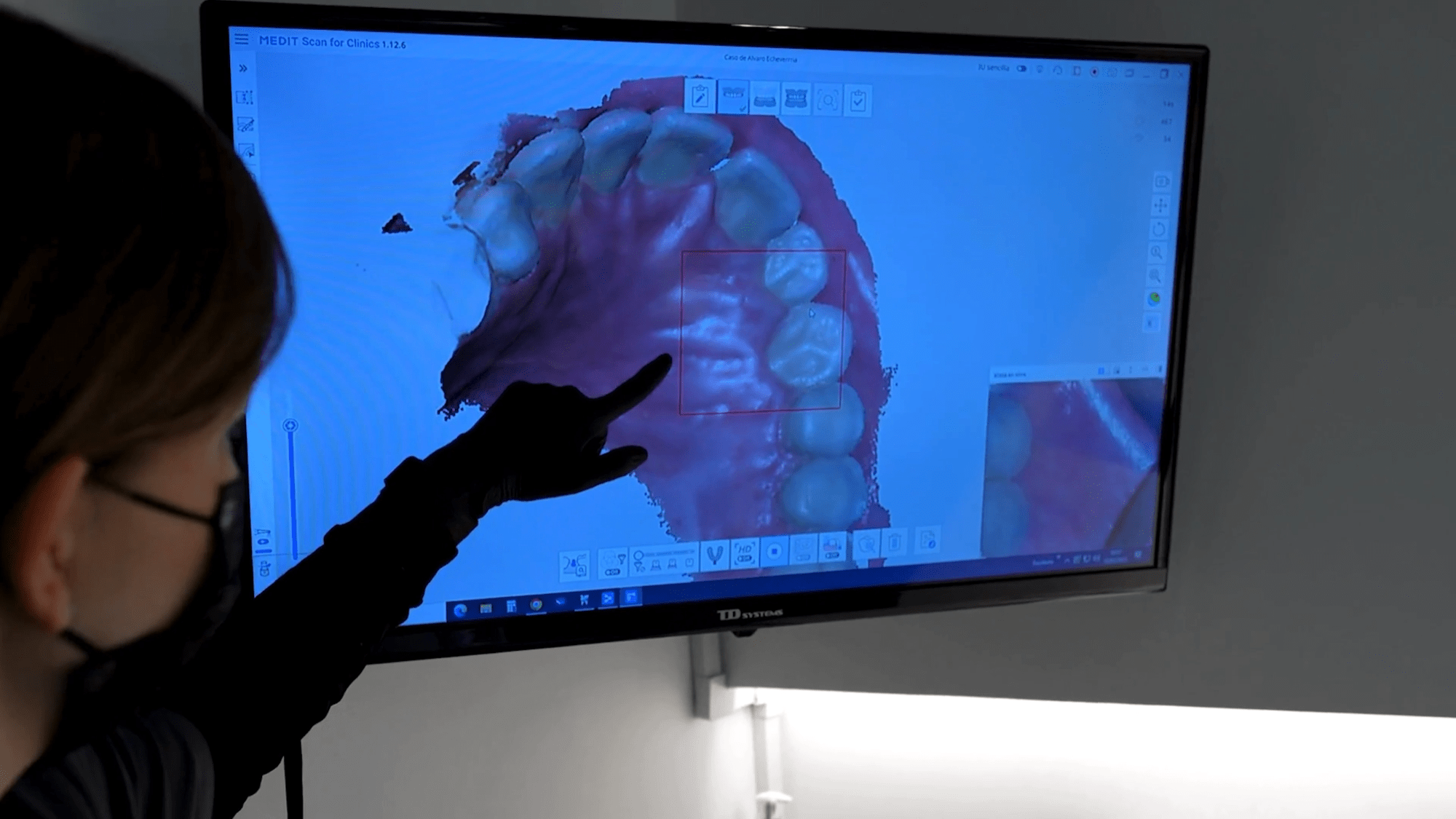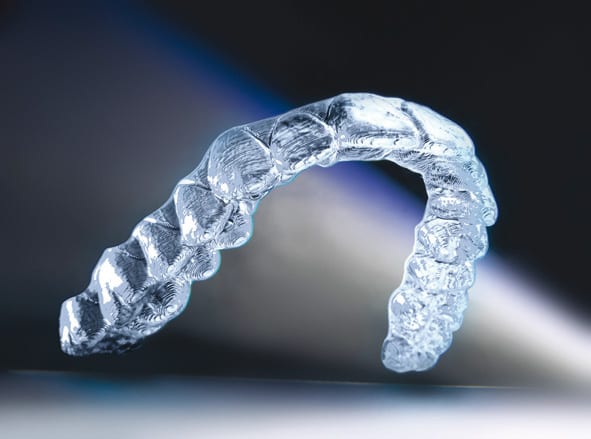Crossbite is a common form of malocclusion where the teeth do not align properly when the jaws close. Often confused with underbite, this condition can involve either the front teeth (anterior crossbite) or the back teeth (posterior crossbite), and it affects both children and adults. Without proper intervention, crossbites can lead to long-term dental complications, including enamel erosion, jaw strain, asymmetric facial development, and gum disease. Early detection followed by a personalized orthodontic treatment plan is key to correcting alignment and preserving overall oral health.
Table of contents
What are the different types of crossbites?
What is anterior crossbite?
An anterior crossbite occurs when the lower front teeth protrude in front of the upper front teeth. This misalignment commonly involves the incisors and canines and is found in approximately 4 to 5% of the population. If left untreated, it can cause noticeable bite abnormalities, excessive wear on tooth surfaces, and even facial asymmetry. Treatment typically includes orthodontic appliances such as braces, clear aligners, or expanders. In more severe adult cases, surgical intervention may be necessary to reposition the jaw and achieve proper alignment.
Common signs and correction strategies for anterior crossbite include:
Visible misalignment of the front teeth
Bruxism or excessive tooth wear in the front
Use of braces, aligners, or jaw expanders
Surgical correction for skeletal issues in adults
Anterior vs. Posterior Crossbite
How common is posterior crossbite?
A posterior crossbite involves the misalignment of the back teeth, where the lower molars or premolars sit outside the upper ones. This issue can occur on one or both sides of the mouth and is more common than anterior crossbite, affecting around 16% of people. Left untreated, it can disrupt normal chewing patterns and contribute to uneven jaw development. Treatment is most effective in children using palatal expanders but is also manageable in adults with braces or aligners.

What is the best treatment for crossbite?
The most effective treatment depends on the severity and type of crossbite, as well as the patient’s age. For growing children, palatal expanders gradually widen the upper jaw to guide proper alignment. In teens and adults, clear aligners and traditional braces help refine tooth position. Timely treatment is critical—delays can lead to worsening misalignment, enamel damage, and higher risks of tooth decay and gum disease.

Crossbite vs Underbite
While the two terms are related, they describe different conditions. A crossbite refers to any scenario in which upper and lower teeth do not align correctly, whether in the front or back of the mouth. An underbite is a specific kind of anterior crossbite, where the lower front teeth extend significantly beyond the upper front teeth. Both conditions are considered forms of malocclusion and often require similar orthodontic interventions.
Signs of Crossbite
In a properly aligned bite, the upper teeth slightly overlap the lower teeth, and both rows meet evenly. A crossbite becomes evident when one or more lower teeth extend past their upper counterparts. Common indicators include trouble biting or chewing, uneven wear on tooth surfaces, and jaw discomfort. A dental consultation and examination are the best ways to confirm the diagnosis and begin treatment planning.
Correcting a Crossbite
Correcting a crossbite isn't just cosmetic—it's essential for long-term dental function and health. Malocclusion places excessive stress on the teeth and jaw, increasing the likelihood of enamel erosion, gum recession, and jaw joint disorders. Proper alignment also improves speech clarity, chewing efficiency, and oral hygiene, making it easier to prevent cavities and gum disease.
How Crossbites are Formed
Genetic Predisposition
Genetic factors play a significant role in the development of crossbite. Individuals may inherit jaw structure anomalies, tooth size discrepancies, or patterns of dental eruption that contribute to misalignment. If one or both parents have a history of malocclusion, their children are at a higher risk for developing similar bite issues. Understanding these genetic influences allows for early screening and timely orthodontic care.
Developmental Habits
Beyond genetic predisposition, crossbites can also develop due to environmental or behavioral factors during early childhood. Prolonged thumb-sucking, extended use of pacifiers or bottles, and chronic mouth breathing can interfere with normal dental development. These habits can alter tongue posture and jaw growth, ultimately resulting in misaligned teeth. Early intervention can often reverse or minimize these effects before permanent teeth erupt.
Identifying Crossbite Early
Early Crossbite Signs
The optimal time to evaluate and correct a crossbite is during early childhood, ideally around age 7. At this stage, orthodontists can monitor jaw development and address alignment issues while the bones are still malleable. That said, adults can still benefit from treatment, though the process may take longer and require more advanced techniques. Whether in children or adults, early diagnosis reduces the likelihood of complications.
Dental Diagnostic Imaging
Diagnostic imaging is a critical tool in orthodontics. Dentists and orthodontists use panoramic X-rays, cephalometric images, CBCT scans, and digital impressions to assess the structure of the jaws and the position of the teeth. These images help in evaluating the severity of the crossbite and in formulating a precise and individualized treatment plan. Imaging also plays a vital role in tracking progress over time.
Correcting Crossbite in Orthodontics
Fixing a Crossbite without Surgery
Most crossbite cases can be corrected non-surgically, especially when caught early. Treatment options include removable appliances like Invisalign, fixed appliances such as braces, and palatal expanders to widen the upper arch. These tools apply controlled pressure to gradually shift teeth and improve bite alignment. For children, early use of expanders is often particularly effective due to their ongoing jaw growth.
Surgical Treatments for Crossbite
Surgical correction is considered only when orthodontic appliances are insufficient, particularly in adults with severe skeletal discrepancies. Orthognathic surgery repositions the upper and/or lower jaw to achieve proper alignment. This approach is typically preceded and followed by orthodontic treatment to ensure stability and function. Though more invasive, surgery can be a life-changing option for patients with significant jaw misalignment.
Common Causes of Crossbite
Why am I developing a cross bite?
In many cases, crossbites develop due to early childhood behaviors or developmental delays. Habits like thumb-sucking, tongue thrusting, or prolonged pacifier use can shift the positioning of growing teeth. When combined with genetic predisposition, these habits increase the likelihood of developing a misaligned bite.
Common habits that increase crossbite risk include:
Thumb-sucking beyond toddler years
Mouth breathing during early development
Tongue thrusting against teeth
PPremature loss of baby teeth
Delayed eruption of adult teeth
Leaving Crossbite Untreated
Untreated crossbite can lead to a cascade of problems that go well beyond aesthetics. Misaligned teeth can contribute to jaw discomfort, poor chewing efficiency, uneven enamel wear, and speech difficulties. Over time, they may also increase the risk of developing temporomandibular joint (TMJ) disorders and periodontal disease. Early intervention is key to preventing these complications and maintaining long-term health.
Dangers of a Crossbite
Crossbite is more than a cosmetic concern. If left unaddressed, it can lead to serious oral health issues including excessive enamel wear, gum recession, and jaw joint dysfunction. These complications can compromise chewing, speech, and overall comfort, potentially impacting quality of life.
Crossbite Untreated
Crossbites that go uncorrected often result in long-term problems such as chronic jaw pain, recurrent headaches, and excessive strain on the TMJ. They can also contribute to uneven facial growth in children and loss of confidence due to noticeable bite irregularities.
Potential consequences of untreated crossbite:
Headaches, toothaches, and jaw aches
Jaw joint strain or development of TMJ disorders
Heightened risk of gum disease and tooth loss
Difficulty chewing and chronic pain while eating
Effects on Your Teeth
A misaligned bite makes it harder to maintain proper oral hygiene. Crossbites create tight or overlapping spaces that are difficult to clean, allowing plaque to build up and increasing the risk for cavities and gum disease. Over time, these areas can become hotspots for bacterial activity and enamel breakdown.
Oral hygiene risks associated with crossbite:
Plaque accumulation in misaligned areas
Uneven wear on enamel and tooth surfaces
Elevated risk for gingivitis and periodontal disease
How is a crossbite diagnosed?
A crossbite is typically identified during an orthodontic evaluation, often prompted by visible asymmetry in the face or jaw. One of the key indicators is when the upper teeth sit inside the lower teeth rather than overlapping them as they should. This imbalance may be present on one or both sides of the mouth and can create a noticeably narrow upper jaw. A thorough clinical assessment—sometimes supported by digital imaging—helps confirm the diagnosis and guide treatment planning.
How do you diagnose malocclusion?
Malocclusion, or improper alignment of the teeth and jaws, is most often diagnosed during a routine dental or pediatric checkup. If alignment issues are suspected, patients are usually referred to an orthodontist for a more detailed evaluation. Diagnosis involves reviewing dental history, conducting a full exam of the mouth, and assessing the way the teeth fit together when biting. From there, appropriate treatment options can be explored.
What are the symptoms of crossbite?
Crossbite can present in several ways beyond just tooth positioning. Common signs include teeth that don’t align when the mouth is closed, frequent cheek or tongue biting, and speech issues such as a mild lisp. Some patients also experience jaw pain, tension in individual teeth, or recurring headaches. These symptoms can vary in intensity depending on the severity and type of crossbite present.
Does insurance cover Invisalign?
Insurance coverage for Invisalign often depends on the specifics of your dental plan. Some plans include orthodontic benefits that may cover part of the cost of clear aligners, while others place a cap on reimbursement or exclude certain types of treatment altogether. It’s important to check with your insurance provider directly, and your orthodontist’s office can also help clarify what’s included under your policy.
How do you diagnose or correct misalignment of the teeth or bite?
Misalignment issues are typically first noticed during a routine dental exam. A dentist may evaluate how the upper and lower teeth come together and assess the relationship between the jaws. If the bite appears irregular or causes functional concerns, the patient may be referred to an orthodontist for further diagnosis and treatment. Solutions can range from braces and aligners to appliances that guide jaw development, depending on the nature and severity of the issue.
Conclusion
Crossbite is more than just a cosmetic imperfection—it’s a medically recognized condition that, if untreated, can lead to significant oral and systemic health problems. The good news is that with early evaluation and a well-executed treatment plan, most crossbites can be fully corrected. Modern orthodontic options such as Invisalign, braces, and palatal expanders offer flexible and effective solutions for patients of all ages. Working with a licensed orthodontist ensures a customized approach that restores bite function, supports oral health, and contributes to lifelong confidence in your smile.






